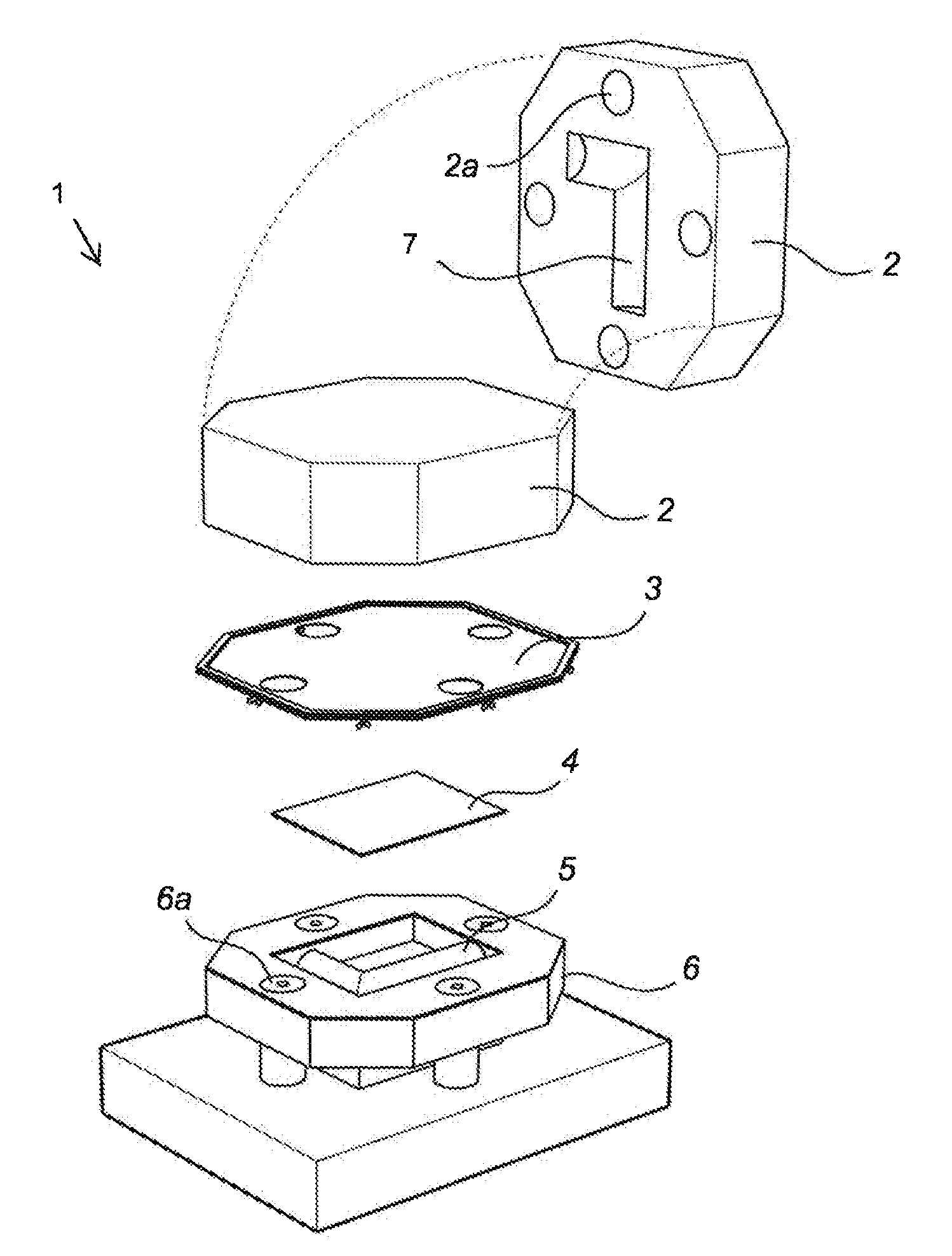Tool arrangement with a protective non-woven protective layer
a protective layer and tool technology, applied in the direction of manufacturing tools, shaping tools, forging/pressing/hammering apparatuses, etc., can solve the problems of affecting the surface smoothness or external shape of the tool, and the contact pressure between the tool and the sheet metal is often very large, so as to minimize the quantity of lubricant used, reduce the difficulty of tool maintenance and washing, and eliminate or at least minimize the effect of lub
- Summary
- Abstract
- Description
- Claims
- Application Information
AI Technical Summary
Benefits of technology
Problems solved by technology
Method used
Image
Examples
Embodiment Construction
[0051]One embodiment of the invention consists of the following parts:
[0052]One or more draped tools for sheet metal forming, in which non-woven textile is used as the protective layer between sheet metal and tool, inter alia for deep drawing and other forming of complex three-dimensional geometries.
[0053]One embodiment of the invention comprises the fastening of specially adapted textiles, for forming, to the tools.
[0054]Draped tools can replace the use of lubricant in the forming operation, including in the forming of sheet metal which has an adhesive effect on the tools, for example stainless steel sheet metal, titanium and aluminum.
[0055]Draped tools can also be used in the pressing of galvanized sheet metal. Typical problems which arise are galvanized slip at drawing radii and beads. Where fabric is used, this can be replaced once it has become contaminated by the Zn layer.
[0056]As a result of the protective textile layer, the surface finish of the sheet metal product can remai...
PUM
| Property | Measurement | Unit |
|---|---|---|
| length | aaaaa | aaaaa |
| length | aaaaa | aaaaa |
| length | aaaaa | aaaaa |
Abstract
Description
Claims
Application Information
 Login to View More
Login to View More - R&D
- Intellectual Property
- Life Sciences
- Materials
- Tech Scout
- Unparalleled Data Quality
- Higher Quality Content
- 60% Fewer Hallucinations
Browse by: Latest US Patents, China's latest patents, Technical Efficacy Thesaurus, Application Domain, Technology Topic, Popular Technical Reports.
© 2025 PatSnap. All rights reserved.Legal|Privacy policy|Modern Slavery Act Transparency Statement|Sitemap|About US| Contact US: help@patsnap.com



